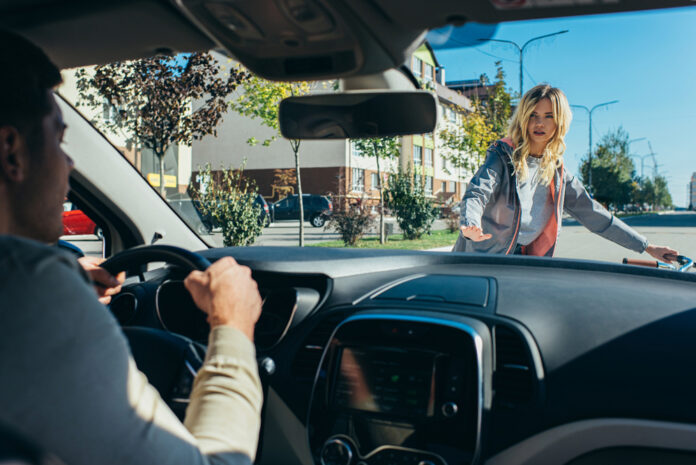Impact speed is the largest factor in mortality rates among collisions with a pedestrian. As impact speed increases, the probability of death for the pedestrian quickly rises after around 19 miles per hour (MPH). This is why there are many laws and strategies that control pedestrian and traffic flow as well as speed in areas where pedestrians are present.
Managing Risk
There are many ways traffic patterns are built around the presence of pedestrians. Impact speed also affects a driver’s reaction speed to the presence of pedestrians.
Speed Limit Laws
Many states have default speed limits for areas where no speed limit is posted. Generally, speed limits for areas that are urban or residential are around 25 to 30 MPH. Outside of those areas, pedestrians are much less common so default speed limits are usually much higher like 70 MPH.
Traffic Management
There’s a reason it is so hard to cross roads with higher speed limits like highways. Once the speed limit for roads reaches a high probability of pedestrian mortality, barriers are constructed, blocking off foot access to the road. For this reason, many high-speed roads are illegal to walk along, except in the case of an emergency.
Even pulling over along a highway is a dangerous act. The Federal Highway Administration has strict guidelines for minimizing your risk while on the side of the road. Even police officers who have emergency lights on are frequently hit by oncoming traffic, both in their car or standing outside to speak to the motorist they pulled over.
Pedestrian Management
Pedestrians have the legal right of way in most states and situations, meaning vehicles must yield to them. However, there are many techniques used in urban planning and traffic management that limit pedestrians so this right of way is not abused or used in dangerous situations.
In urban areas, pedestrian crossing signals and crosswalks control when and where pedestrians can venture into the street. Jaywalking, crossing the road unlawfully or without thought for the current traffic, is also a crime in many states. The jaywalking laws incentivize pedestrians to follow the laws about making a safe crossing. Both pedestrian right of way laws and jaywalking violations can be factors in determining liability for accidents.
Probability of Death
So, why are pedestrian accidents different than other accidents? Being struck by a vehicle is an astounding thing to survive, even at low speeds. If a driver is exceeding the marked speed limit and hits a pedestrian, they are almost always considered liable for the outcome of the collision.
Statistics
Around 16% of traffic fatalities each year are pedestrian or cyclist fatalities. As impact speed increases, so does the probability of the pedestrian’s death.
Even at 16 MPH, the odds of pedestrian death are 10% and jump to 25% at 23 MPH. This shows why even low-speed limits are unlikely to help in many cases if the driver is not paying attention. Staying vigilant and braking at an appropriate time is crucial for lowering the impact speed and risk to the pedestrian.
At just 31 MPH, you are looking at a coin flip in terms of the outcome with an average of 50% chance that the pedestrian will perish. At what is considered a “high speed” of 58 MPH, the probability of death reaches over 90%. Roads over 45 MPH are typically limited to pedestrians or protected by a barrier or wide shoulder.
Other Risk Factors
The human body can only withstand so much trauma, and besides impact speed, there are other risk factors that increase the probability of a fatal outcome. The older a pedestrian is, the less their body is likely to survive an impact with a vehicle. Many retirement communities have strict speed limit laws and private security patrolling for this reason. These communities frequently turn to golf carts as a safer mode of transportation.
Find a Home-Based Business to Start-Up >>> Hundreds of Business Listings.

















































